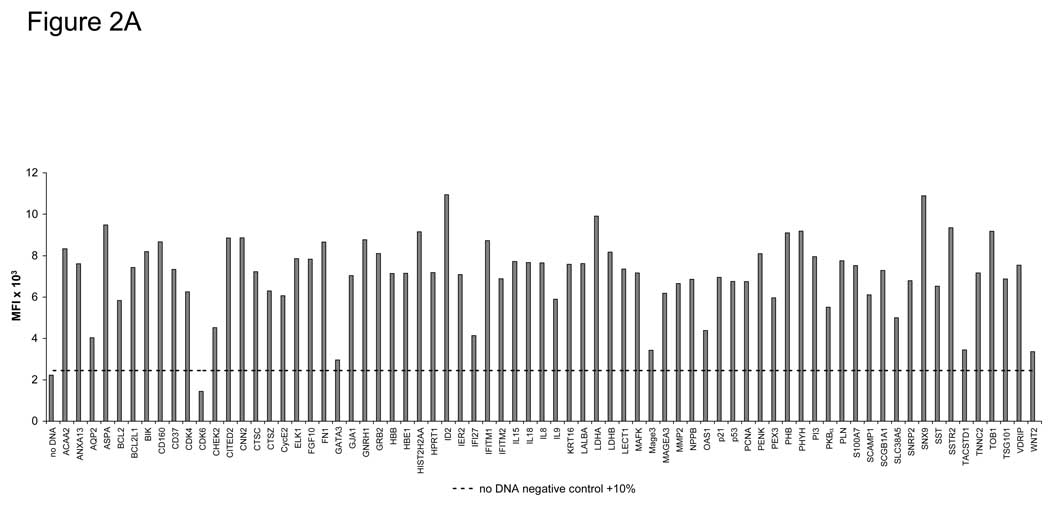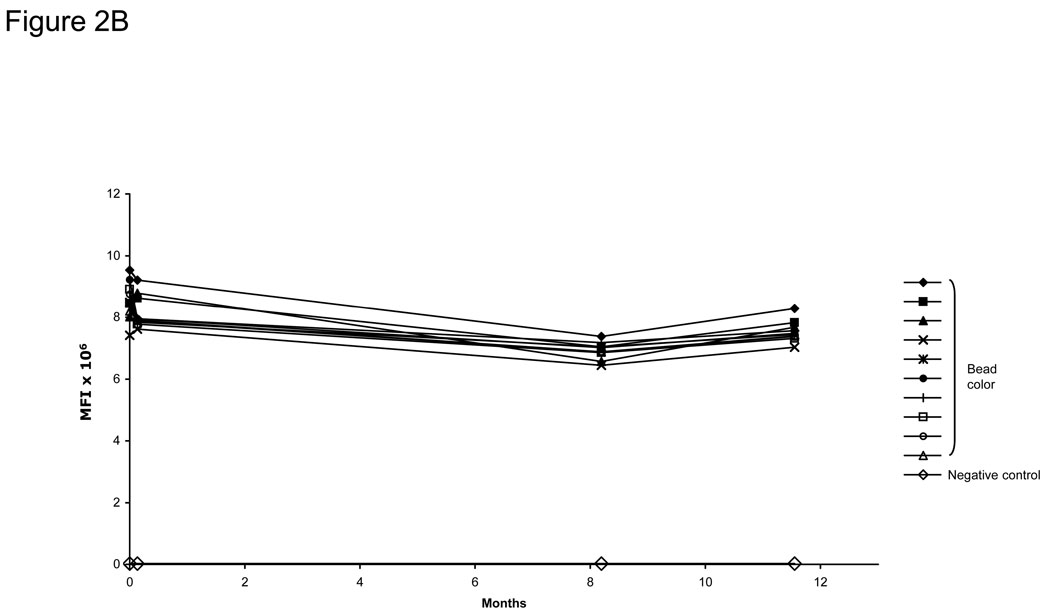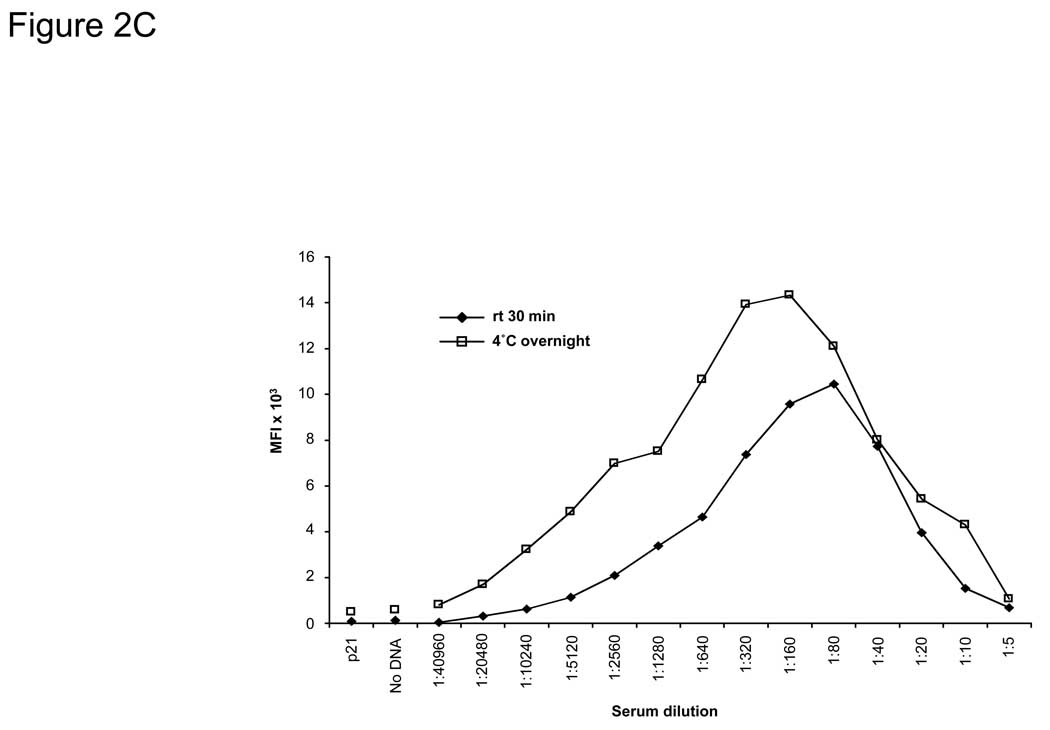Figure 2. Protein expression, stability, and specificity of the bead ELISA.
A) Specific detection of 72 captured GST-tagged tumor antigens on beads. DNA was prepared using a high-throughput robotic preparation method, expressed in vitro, bound to anti-GST-coupled beads, and detected using an anti-GST MAb. Background expression (10% above the average of non-antigen containing beads) is shown as a dotted line. B) Anti-GST-coupled beads stored over 11 months showed no change in the stability of bound IgG using donkey anti-goat IgG-PE antibody. C) EBNA-1 antibody-positive serum from a healthy donor was tested for anti-EBNA-1 antibodies using the bead ELISA. EBNA-1-GST and p21-GST fusion proteins were expressed by IVTT and bound to anti-GST-coupled Luminex beads. Serum was added in the titrations shown for either 30 minutes at rt or at 4°C overnight. P21-GST and no DNA controls were tested at 1:20 dilution. Incubation overnight increased the sensitivity of the assay 8-fold to >1:20,000, and optimal serum dilution for maximal detection was at 1:80–1:320.



